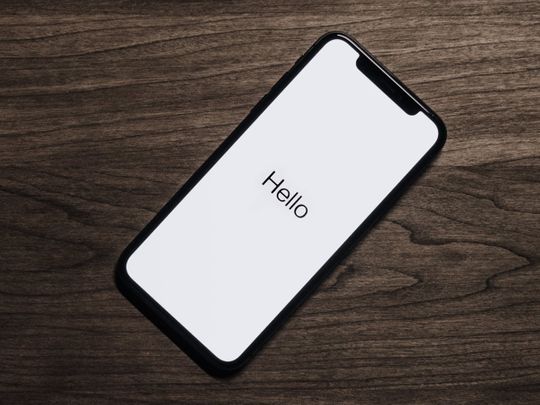
Cupertino: Apple Inc. is preparing a redesign of its top-tier iPhones, borrowing cues from the latest iPads, as part of a major fall refresh that will see 5G added to as many as four new handset models and the release of two key new accessories.
This year’s successors to the iPhone 11 Pro and iPhone 11 Pro Max will be joined by two lower-end models to replace the iPhone 11. At least the two high-end devices will have flat stainless steel edges instead of the current curved design as well as more sharply rounded corners like the iPad Pro introduced in 2018.
Reminiscent of the iPhone 5 design, the new handsets will have flat screens rather than the sloping edges on current models. Apple has also been developing a smaller and cheaper version of its HomePod speaker, to be released as early as this year, and so-called Apple Tags that will let users track real-world objects like keys and wallets, according to people who’ve seen prototypes.
Because of disruptions caused by the coronavirus pandemic, at least some of the new iPhones could be released multiple weeks later than normal, though still within the typical fall window. Apple hasn’t informed suppliers of any significant delays, and its engineers are expected to travel to China and finalize product designs in May.
Mixing it up with AI, AR
The upcoming iPhone Pro models will include three cameras on the back while the lower-end phones will continue to have two cameras, as with the current lineup. Apple will add the 3-D LIDAR system that debuted with the iPad Pro in March to its top-tier devices, setting the stage for advances in augmented-reality applications.
The highest-end new iPhone is set to have a screen slightly larger than the 6.5-inch panel on the iPhone 11 Pro Max. Apple is investigating removing the cutout at the top of the display for the selfie camera and Face ID sensors in future designs, and it’s likely to reduce that notch in size with this year’s models.
All the phones are planned to include a significant upgrade to the processor with an emphasis on speeding up artificial intelligence and AR tasks.
When will the launch be?
Since 2012, Apple has released major new iPhones each September, except for the release of the iPhone X in 2017 that came in November due to supply constraints. This year, the company is navigating a global pandemic that temporarily slowed its China-based supply chain and has hurt smartphone demand due to a stalled global economy.
Given the uncertainty surrounding the spread of the novel coronavirus and the shifting economy, Apple’s launch plans and iPhone specifications could still change.
Juice up HomePod sales
Apple’s new HomePod speaker will be about half the size of the original while keeping a similar design. The device has been in development for several months and faced delays, and Apple is now targeting a release in the second-half of this year, they added. Offering it at a lower price will help Apple better compete with cheap smart speakers from Amazon.com Inc. and Alphabet Inc.’s Google, which currently dominate the US market. The HomePod has largely been seen as a failure in terms of sales, though its superior sound quality remains a competitive advantage.
Beyond price, the HomePod’s comparative lack of success has also been driven by its narrower compatibility with music streaming services and smart home products as well as the limited functionality of Apple’s voice assistant, Siri.
The Apple Tags wireless accessory will offer functionality much like gadgets already on the market like Tile trackers, people familiar with the product said. It will be bundled with an Apple-designed leather sleeve and a keychain to attach it to objects, they said. The thin, small, puck-shaped tags have been in development for over a year and are planned for release as early as this year.








